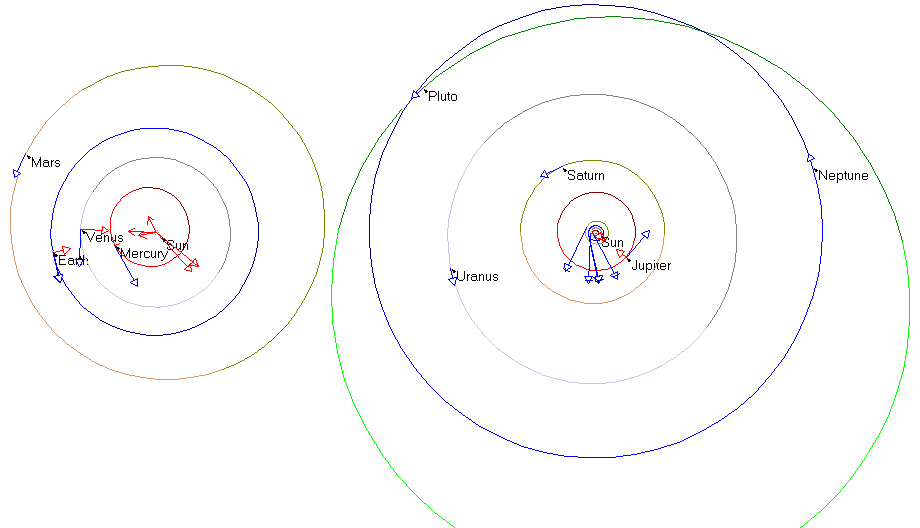for use with the simulations Entire solar system: orbits and Earth view and Force and velocity
from the materialworlds Solar System simulations
© materialworlds.com 2002

The planet orbits traced out in these simulations (all except the geocentric view) track the paths followed by the planets relative to the Sun. Luckily for us the gravitational attraction of the Sun leads the planets to follow relatively fixed orbits - following the same path one journey around the Sun after another. Interactions between the planets do cause small cyclical changes in their orbits, but don't cause them (the planets remaining in our solar system) to drift into permenantly different orbits.
Use both the Entire solar system: orbits and Earth view and Force and velocity simulations to answer these questions.
The Force and velocity simulation shows force (red arrows) and velocity (blue arrows) in the plane of the Earth orbit.
The Entire solar system: orbits and Earth view simulation gives a 3D appreciation of what lies or moves outside the ecliptic plane.
1. What general observations can you make about the orbits of all or most of the planets?
Comment on the orbits'
a) Speed
b) Shape
c) Direction (which way does it go around the Sun)
d) Orienation (what plane does the orbit lie in)
2. Do any planet orbits stand out as being different from most of the others?
If they do - which, and how are they different?
3. What is the link between Mercury's name and it's nature?
4. Do you think Neptune and Pluto will ever collide? Give your reasons.
Questions requiring further research...
5. How do the observations you made in question 1. fit in with theories of the formation of the Solar system?
6. Apart from the Sun and the planets, what else is in the Solar system?
Do these other objects have sufficient mass to affect the behaviour of the Sun and the planets?